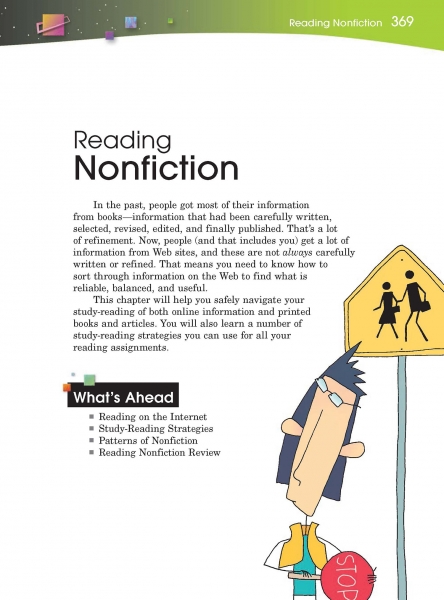Page 369 from

Start-Up Activity
Display the term nonfiction and ask a volunteer to define it (writing about real people, places, things, and ideas). Then, have students identify examples of nonfiction (magazine and newspaper articles, textbook chapters, Web pages, and so on).
Next, refer students to a page in a textbook or to a Web page and ask them why reading a page like this is important (to gain information) and what makes it challenging (so many facts and details, new words, and so on). Point out that this chapter provides strategies to help students read nonfiction more effectively. Have a volunteer read the opening page aloud.
Think About It
“I still believe nonfiction is the most important literature to come out of the second half of the 20th century.”
—Tom Wolfe

Start-Up Activity
Display the term nonfiction and ask a volunteer to define it (writing about real people, places, things, and ideas). Then, have students identify examples of nonfiction (magazine and newspaper articles, textbook chapters, Web pages, and so on).
Next, refer students to a page in a textbook or to a Web page and ask them why reading a page like this is important (to gain information) and what makes it challenging (so many facts and details, new words, and so on). Point out that this chapter provides strategies to help students read nonfiction more effectively. Have a volunteer read the opening page aloud.
Think About It
“I still believe nonfiction is the most important literature to come out of the second half of the 20th century.”
—Tom Wolfe





